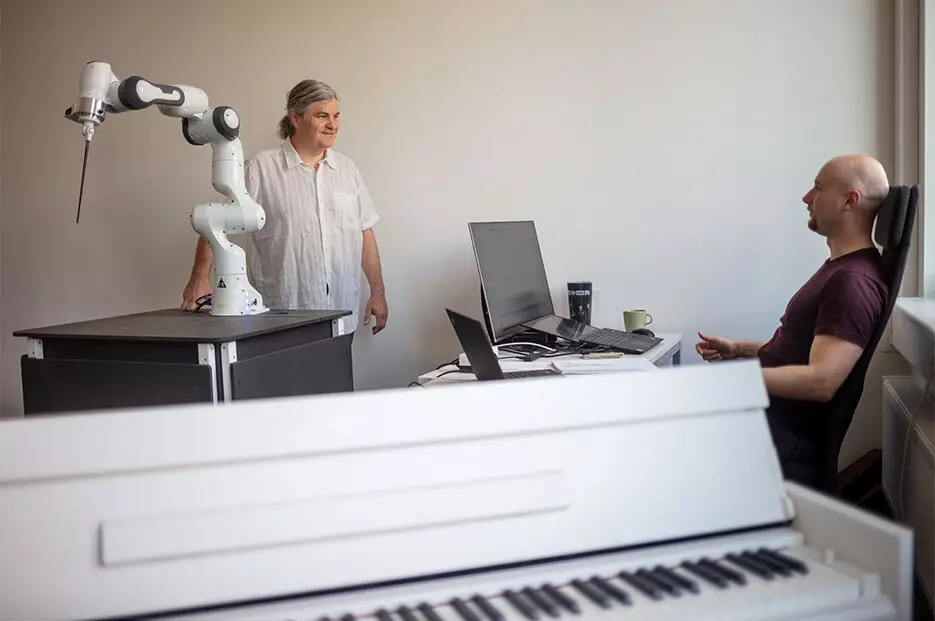In a fascinating fusion of technology and art, a groundbreaking three-armed robot has made its debut as a conductor in Dresden, Germany. This innovative machine was designed to imitate the gestures of human conductors while leading a live orchestra. Equipped with three independent arm-like appendages, each resembling elaborate batons reminiscent of science fiction weaponry, the robot directed the esteemed Dresdner Sinfoniker orchestra during two captivating performances. The event marked a significant intersection of musical creativity and robotics, showcasing the potential of technology to enhance artistic expression.
What truly sets this performance apart is the specially composed music that complements the robot’s unique capabilities. The featured piece, “Semiconductor’s Masterpiece,” was crafted by composer Andreas Gundlach, commissioned specifically for this occasion. By utilizing the robot’s ability to manage three distinct sections of the orchestra, the performance offered a dynamic and nuanced experience that a traditional human conductor might struggle to achieve. This unprecedented approach highlights the advantages of robotic precision in orchestrating complex musical arrangements.
Gundlach explained that the inception of the robotic conductor was heavily inspired by researchers at Dresden’s Technical University. These scientists focus on developing collaborative robots, or “cobots,” which are intended to augment human capabilities rather than replace them. This philosophy is particularly poignant in the realm of music, where human expression and technological innovation can coexist. The design and training of the robot took two years of meticulous work, underscoring the dedication required to blend engineering with artistry effectively.
Interestingly, Gundlach’s experience in training the robot led him to profound realizations about human creativity. He noted that teaching the machine to perform aesthetic arm movements required a level of understanding that deepened his appreciation for what it means to be human. This interaction illustrates an essential aspect of robotics: that while machines can mimic human gestures, the intrinsic qualities of human creativity, emotion, and intuition remain deeply unique. It begs the question: can machines ever truly replicate the emotional nuance that human conductors bring to orchestral performance?
As evidenced by the performance of “#kreuzknoten” by Wieland Reissmann, where instruments played at varying tempos under the robot’s guidance, this technological advancement raises intriguing possibilities for the future of orchestra conductance. Spectators were left to ponder the implications of a robotic presence in traditional music settings: Will we see a rise in human-robot collaborations in the arts? Or will this lead to a pushback from purists who argue for the irreplaceable value of human conductors?
Ultimately, the Dresden performances are a starting point for a new era in music, where advances in robotics open doors to innovative artistic expressions while simultaneously compelling us to reflect on our own humanity. The robotic conductor is not merely a novelty; it is a beacon of what the future holds at the intersection of technology and creative arts.


Leave a Reply